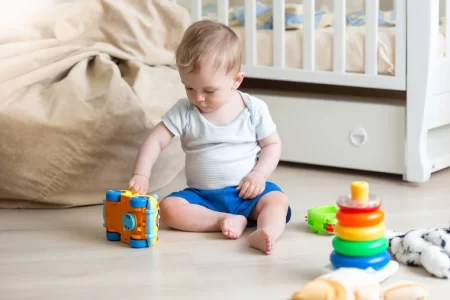 Designing a toddler’s room is an exciting and rewarding task. It’s an opportunity to create a space that is not only visually appealing but also safe, functional, and stimulating for your little one’s growing needs.
Designing a toddler’s room is an exciting and rewarding task. It’s an opportunity to create a space that is not only visually appealing but also safe, functional, and stimulating for your little one’s growing needs.
From choosing the right colors and furniture to incorporating playful elements, this post will guide you through some creative ideas to design a toddler’s room that will delight both children and parents alike.
Safety First
When designing a toddler’s room, safety should be the top priority. Ensure that all furniture is securely anchored to the wall to prevent accidents. Cover electrical outlets and secure cords out of reach. Use non-toxic paints and materials to avoid any harmful effects. Additionally, opt for soft, rounded edges on furniture to minimize the risk of injuries.
Color and Theme Selection
Choosing the right colors and themes can greatly impact the overall ambiance of a toddler’s room. Bright, cheerful colors like yellows, greens, and blues stimulate creativity and energy.
Consider themes such as animals, nature, or space that will spark your child’s imagination. However, remember to strike a balance by incorporating neutral colors to create a soothing environment for restful sleep.
Functional Furniture
Invest in furniture that is both functional and age-appropriate for your toddler. A sturdy crib or toddler bed with safety rails is essential. Include a comfortable mattress and bedding to promote good sleep. Introduce a child-sized table and chairs for playtime and activities.
Utilize storage solutions like shelves, baskets, and toy chests to keep the room organized and clutter-free.
Playful Elements
Incorporating playful elements can make a toddler’s room more engaging and enjoyable. Consider adding a colorful rug for playtime on the floor. Install a wall-mounted bookshelf for easy access to books. Create a reading nook with soft cushions and a small bookcase. Include a low-height mirror for your child to explore self-expression. Hang artwork or decals that feature their favorite characters or objects.
Sensory Stimulation
Toddlers are constantly exploring their senses, so integrating sensory elements into the room design can enhance their development. Install a mobile or ceiling-mounted projector that casts soothing images or shapes on the walls and ceiling.
Provide tactile experiences with textured fabrics, soft rugs, and interactive toys. Consider incorporating musical instruments or a small musical mobile to engage their auditory senses.
Versatile Spaces
Design the room with flexibility in mind. As your child grows, their needs and preferences will change. Create spaces that can easily adapt to different activities and stages of development.
Incorporate storage units with adjustable shelves to accommodate changing toy sizes. Consider furniture pieces that can be repurposed or transformed as your toddler transitions to a preschooler.
Designing a toddler’s room is an opportunity to create a space that fosters growth, imagination, and comfort. Remember, as your toddler grows, their room should evolve too, so keep an open mind to adapt and update the design as they reach new milestones.
Picture Credit: VistaCreate



